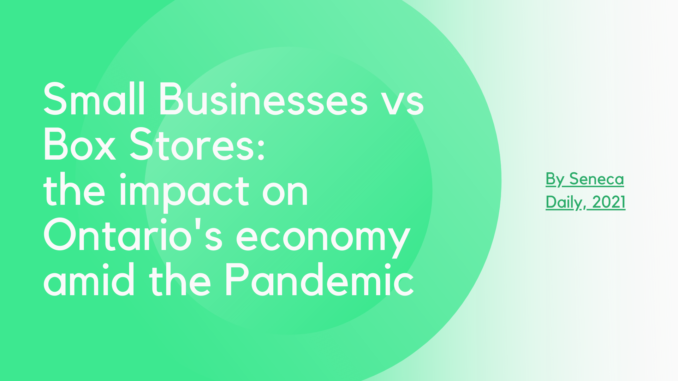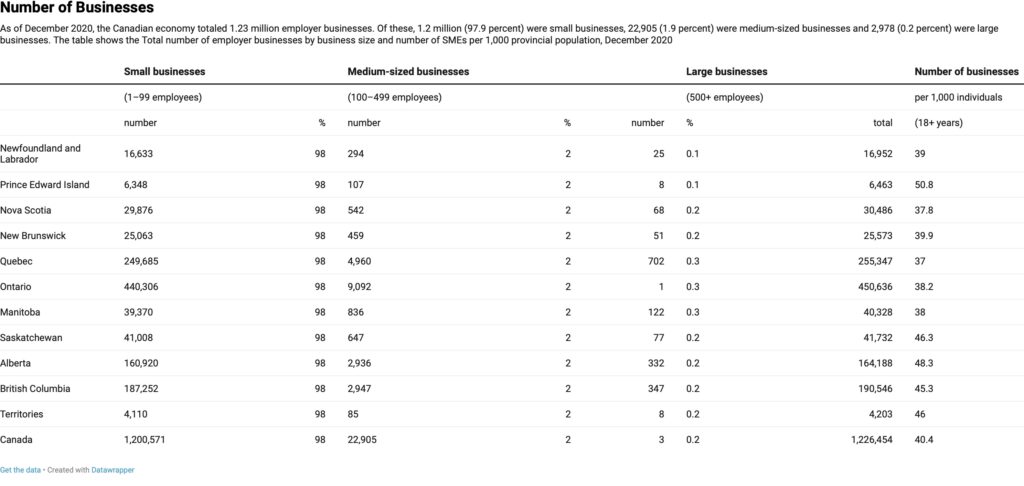
In Canada, it is a very known expression that small and medium businesses “are the backbone of this country”.
Small and Medium-sized entrepreneurship (SMEs) are responsible for 70% of the total employment in Canada and they are a majority in the country’s economy. On the other hand, big box stores – or as we see them: superstores, franchises, department stores and all those big brand names we all know – are the minority in terms of existing stores, but are impactful anyway.
David vs Goliath
The difference between small businesses and big box stores is the number of resources available: capital, workforce, access, taxes, marketing, etc. Each element can influence how long-lasting a company can be. Box Stores may not be as numerous in physical presence in the country but they do cast a larger shadow through popularity and marketing, not to mention cash flow.
Because of the Covid-19 pandemic and the subsequent measures to control the outbreak in Canada, many SMEs found it difficult to stay on both feet while others closed permanently. As said before, SMEs have access to limited resources, as opposed to larger companies in retail. A total of 88,187 Canadian SMEs closed in April 2020, following the first lockdown worldwide. According to Statistics Canada, “The large number of business closures in April 2020 reflect the impact of the COVID-19 pandemic.”
To Economics Professor Armando Barragan, an expert in international trade, the presence and employability of SMEs have a large impact on the Canadian economy. “It is natural to expect an impact in the whole economy when these kinds of shutdowns happen”. According to him, the extraordinary infra-structure a large company has in comparison to a small business makes it fit to survive the hard conditions of a third lockdown.
Think Outside the Big Box
Because of the popularity and appeal of box stores, small and medium retail had to come up with new strategies if they wanted to survive a long winter. During the holiday season in 2020, SMEs in Canada adopted some campaigns to attract the eye of the consumer.
Discounts or fidelity programs would be joined by campaigns such as #ThinkOutsidetheBigBox. The campaign was like a silent protest in which SME’s owners stood outside the stores for 30 minutes at noon on December 11th encouraging people to consider buying from small businesses.
A Broken Spring Break
Now, most of the places worldwide are living the third wave of Covid-19 Pandemic – including Canada. While the rules for this spring 2021 lockdown in Ontario may seem confusing to some people, SMEs are trying to adapt and review their services.
Recently Queen’s Park banned online concerts from the Easter long weekend to the end of April. The reason? To avoid the contact between musician and crew on stage, even if they can distance. The venues that booked Livestream shows have to postpone the virtual events for May. However, film shootings and TV recordings were not affected by the measure.
With the first lockdown in the spring of 2020, the statistics show how independent businesses were affected in Canada, especially in the province of Ontario where many got into debt or had to close doors for good (or bad). One year later, with the new measures in this spring of 2021, there is a sense of hope for the new statistics to come not to repeat the previous season.


Be the first to comment